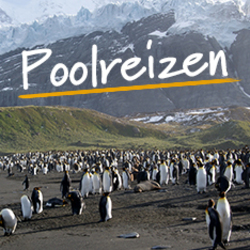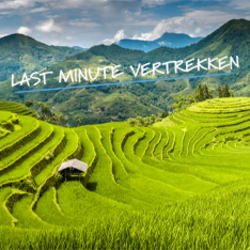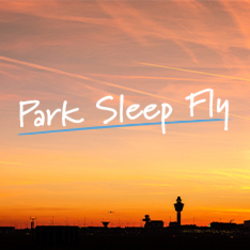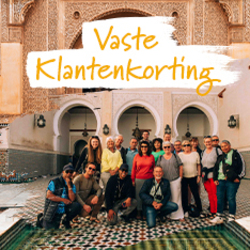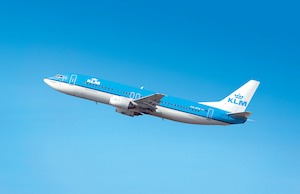Activities
- Walking & Trekking
- Point-to-Point
- — Take quiet trekking trails without the permit and other restrictions imposed on the Inca Trail — Discover Choquequirao, one of the best-preserved Inca ruins — Experience diverse scenery from cloud forests and canyons to high passes and the towering peaks of the Vilcabamba range — Enjoy guided tours of Machu Picchu and the Sacred Valley — Spend time exploring historic Cuzco
Food
-
1
Start Cuzco; afternoon walking tour
Welcome to Cuzco! The Inca capital – though small enough to be easily manageable – is among the most attractive cities in South America with much of the centre comprising Colonial-era buildings with Inca foundations. We have a short walking tour around the compact city centre to get our bearings. We recommend taking it easy upon arrival into Cuzco and to drink plenty of water to allow your body time to acclimatise to the altitude (11,155ft/3,400m). There is a welcome briefing in the hotel lobby this evening. Accommodation: MamaSara Hotel (or similar)
-
2
Free day in Cuzco
Today has been left free for exploring Cuzco. The Plaza de Armas is a fantastic spot for people watching, while Qorikancha (the Sun Temple) in the Santo Domingo Church and monastery is worth a visit. Mercado San Pedro is the place to try local produce and there are many handicraft markets to shop for souvenirs such as alpaca jumpers and scarves. If you fancy something more active, there is an array of optional activities available from Cuzco. These include paddleboarding on a lake, mountain biking, or a combination of via ferrata and zip-lining in the Sacred Valley. Accommodation: MamaSara Hotel (or similar)
-
3
Drive to Capuliyoc Pass; begin the trek with a descent to Chiquisca
We leave Cuzco early this morning, around 5am, and drive for approximately seven hours to Capuliyoc Pass (approximately 9,565ft/2,915m) in time for lunch, stopping to explore the archaeological sites of Tarawasi and Saywite en route. From the top of the pass, we enjoy spectacular panoramic views of the Apurimac River and snow‐capped peaks, as well as Choquequirao itself. Descending from the pass, the path zigzags through dry forest above the raging waters of the Apurimac River. Our camp tonight is at Chiquisca. Accommodation: Full-service camping: Chiquisca Camp (6,400ft/1,950m)
-
4
Cross Apurimac River then climb to Santa Rosa and Maranpata; to Choquequirao camp
We have another very early start for a long day’s trek. Just over an hour of walking downhill brings us to Playa Rosalina (4,920ft/1,500m), from where we cross the Apurimac River before beginning the long and steep switchback climb up to Santa Rosa village. After a rest stop, we continue climbing to a plateau above Maranpata (9,580ft/2,920m) where we usually have a lunch break in a small village. The gradient eases off a little here and the path undulates towards Choquequirao for a couple of hours. The forests here are home to spectacled bears, and we may catch sight of them as we approach the Inca citadel. After walking through the terraces, we set up camp close to the ruins themselves. This campsite has cold showers and flushing toilets. Accommodation: Full-service camping: Choquequirao Camp (9,960ft/3,035m)
-
5
Full day to explore the magnificent Inca site of Choquequirao and the terraces of Pacchanta
We have ample time to fully explore the vast ruins of Choquequirao. Larger than Machu Picchu, the site comprises nine different areas, each of which had a distinct role covering religious, political and military functions. The quality of the stonework indicates that it housed important Inca officials or royalty and, in common with other important sites, features ritual baths and temples dedicated to the sun, moon and Pachamama, the earth spirit. Much of Choquequirao is unexcavated and many buildings are still hidden beneath the thick forest that surrounds the main site. There are incredible views of the whole site and the Apurimac Valley from the truncated hilltop of Sunch’u Pata, a short distance up from the main plaza. In the afternoon, we visit the terraces of Pacchanta. Accommodation: Full-service camping: Choquequirao Camp (9,960ft/3,035m)
-
6
Cross Choquequirao Pass then descend to the Rio Blanco via Pinchinoyoc; continue to Maizal
We cover a lot of ground today and it can be strenuous, starting with a short but steep climb to the top of the Choquequirao Pass (10,550ft/3,215m) from where we enjoy our last panoramic view over Choquequirao. After the pass, we walk steeply downhill on a wide but dusty road to Pinchinoyoc (7,875ft/2,400m), where we visit Inca terraces previously covered in vegetation. We continue our descent to the bottom of the valley, where we cross the Rio Blanco (5,905ft/1,800m) and begin our ascent up the other side of the valley. This is a long, steep climb up to Maizal. Accommodation: Full-service camping: Maizal Camp (9,845ft/3,000m)
-
7
Steep climb over San Juan Pass with impressive mountain views; descend to Yanama
We start the day with a steep, switchback climb (approximately five hours) up the San Juan Pass (13,680ft/4,170m) – the effort of ascending the pass is balanced with incredible views of the snow-capped peaks of the Vilcabamba range, including Choquetacarpo, Pumasillo and Sacsarayoc. On a clear day, we can see magnificent glaciers and enjoy a 360-degree panorama of these beautiful, serrated mountains. As we near the top, we stop at the 500-year-old La Victoria silver mines. Crossing the pass, we descend for roughly three hours to our camp at Yanama, following an old miners’ track that glitters with silver dust. In May, this path winds through landscapes filled with wild lupins in flower. Today you have good chances to spot a mighty Andean condor soaring on the thermals. Accommodation: Full-service camping: Yanama Camp (11,155ft/3,400m)
-
8
Trek amid Vilcabamba range and over Yanama Pass, surrounded by glaciers, to Totora
Stunning scenery abounds today as we trek deep in the heart of the Vilcabamba range, climbing for approximately five hours to the highest point of the trek, the Yanama Pass (15,290ft/4,660m). There is a new road from Yanama village up and over the pass; however, our trail avoids it wherever possible – and vehicles are few and far between. Our gravelly trail follows the river up the valley before it begins the climb, crisscrossing the new road until reaching the top of the pass and the high point of the trek where lofty Sacsarayoc dominates the skyline from the pass. A roughly four-hour descent from the pass brings us along the valley, passing small villages and following the river to Totora campsite, where we spend the night. Accommodation: Full-service camping: Totora Camp (11,155ft/3,400m)
-
9
Descend to Lucmabamba
From Totora, we have a descent (approximately seven hours) to Lucmabamba. We notice more trekkers today as we converge with a section of the Salkantay trail and enter a more inhabited area. We follow the road for a short section, then a gravel path beside the river; the surroundings are green as we are walking through cloud forest once again. We also see lots of fruit trees and coffee plantations. Tonight’s campsite is particularly special: your tents are pitched on Inca terraces, and the campsite is in the middle of a coffee plantation. Time permitting, there is the chance for a tour of the coffee plantation. Entrance is 10 soles (US$2.70) or free if you purchase coffee – it’s 25 soles (US$6.75) for a large bag. Accommodation: Full-service camping: Lucmabamba Camp
-
10
Follow Salkantay River to Santa Teresa; train to Aguas Calientes
Rising early, we follow an original Inca trail, which climbs uphill for three hours to the site of Llactapata. After a final two-hour descent, we reach the hydroelectric station at Santa Teresa (6,235ft/1,900m) – a good spot for lunch. After lunch, we cross the Vilcanota River and finish our trek at the train station. We board the train to Aguas Calientes in the afternoon and check into our hotel upon arrival for a well-earned rest and shower! Accommodation: Inti Punku Machu Picchu (or similar)
-
11
Morning tour of Machu Picchu; train to Ollantaytambo
An early start is required for Machu Picchu to beat the day-trippers arriving from Cuzco and reach the ruins as early as possible; buses take us up the winding road to the site entrance, and during high season (May-October) there may be a wait. Machu Picchu is one of the architectural and engineering marvels of the ancient world and what makes it all the more dramatic is the staggering mountain backdrop. The Spaniards never found it, the Incas left no records of it, and so it remained an enigma, a city lost for centuries in the jungle until it was rediscovered in 1911 by the American historian Hiram Bingham. Your guided tour highlights the history, culture, architecture and mysteries that Machu Picchu holds to this day. We catch an afternoon train back to Ollantaytambo (1hr 30min) where we spend the night. Accommodation: Tunupa Lodge (or similar)
-
12
Sacred Valley tour; continue to Cuzco
We wake to explore the narrow, cobbled streets and colossal Inca stone terraces that dominate the hillside above Ollantaytambo town. The archaeological site at Ollantaytambo was the royal estate of Inca emperor Pachacuti as well as being of religious and defensive significance. Travelling by road we next visit the ruins of the citadel at Pisac, where Inca terraces are carved into solid rock and there is time to walk around the colourful market. Afterwards, we continue the drive to Cuzco, passing through high-Andean scenery dotted with old towns and villages dating to pre-Columbian times. Accommodation: MamaSara Hotel (or similar)
-
13
End Cuzco
The trip ends in Cuzco after breakfast and we begin our return journeys home. But if you’re not ready for the adventure to end, you can always book onto our Lake Titicaca extension, where you’ll explore the sky-high waters by boat, visit an indigenous community and explore the pre‐Inca site of Sillustani. Alternatively, join our Amazon Rainforest extension to explore lakes, rivers and jungle trails in the wildlife-rich Tambopata Reserve.







